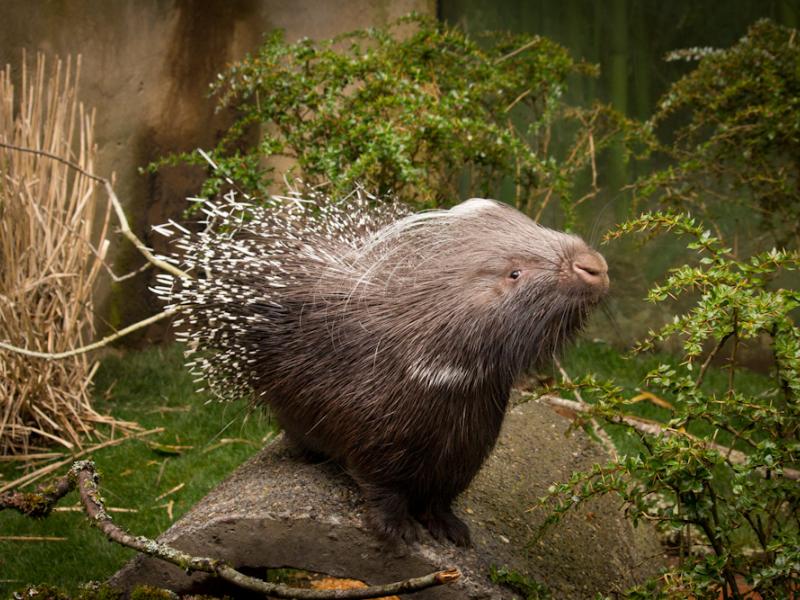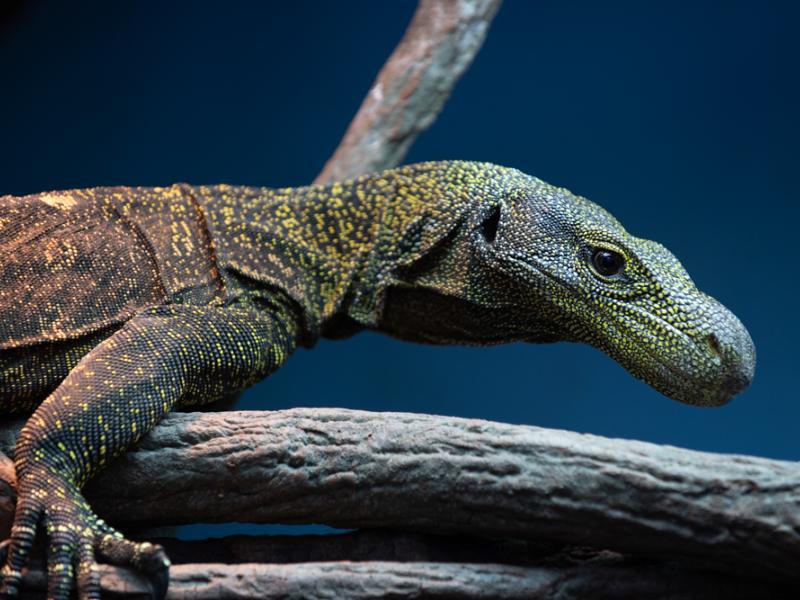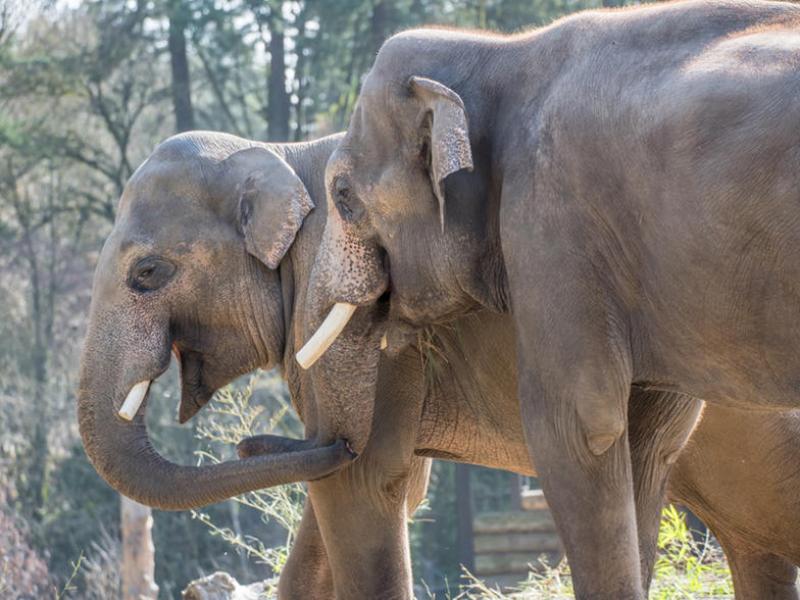
The red-bill lives in open savanna, woodland and thorn scrub in sub-Saharan Africa. It is an omnivore, eating fruit, insects and small animals. Hornbills are named because the shape of their bill reminded early people of cattle horns. The hornbill's first two neck vertebrae are fused to support its large bill. Zazu, a character in the animated film The Lion King is an African red-billed hornbill.
Hornbill behavior and facts
- The red-billed hornbill is one of the smaller hornbills. It has a mainly whitish underbelly and head, a long tail and long, curved red bill. The male and female look similar, but the female has a smaller bill.
- The long, curved bill is an adaptation for digging.
- Red-bills mostly live on the ground and roost in trees near the trunk, or on a large branch. They can fly, despite having relatively short wings.
- They are usually found in pairs or small family parties, but during the dry season may congregate in flocks of several hundred at feeding areas such as water holes.
- They are territorial. They may defend territories against their own species. However, red-bills do not defend their territory from other hornbill species with the result that several hornbill species will overlap territories.
From birth to death
- Females usually lay three to six eggs in a tree cavity. She seals herself and the nest off with a cementlike substance made of mud, droppings and fruit pulp. A narrow opening allows the male to transfer food to her, and later to her and the chicks as they remain sealed inside.
- Incubation: 23 to 25 days
- While in the nest with the chicks, the female molts.
- When chicks are about 20 days old, the female breaks out and rebuilds the wall to expand the nesting area, and then both parents feed the chicks together.
- Chicks fly well on emerging from the nest and never return to it, although they may remain with their parents for six months.
- Lifespan: 15 years
Vital statistics
- Length: 19 to 24 inches
- Weight: less than 1 pound
Status
The red-billed hornbill is widely distributed across Africa and is listed by the World Conservation Union in the category of "least concern."
Hornbills, the Oregon Zoo and you
The zoo's African red-billed hornbills live in the Howard Vollum Aviary. They're fed a small amount of fruits and leafy greens, a formulated fruit-based dry pellet, and a variety of insects including: small and large mealworms, wax worms, crickets and small mice.




